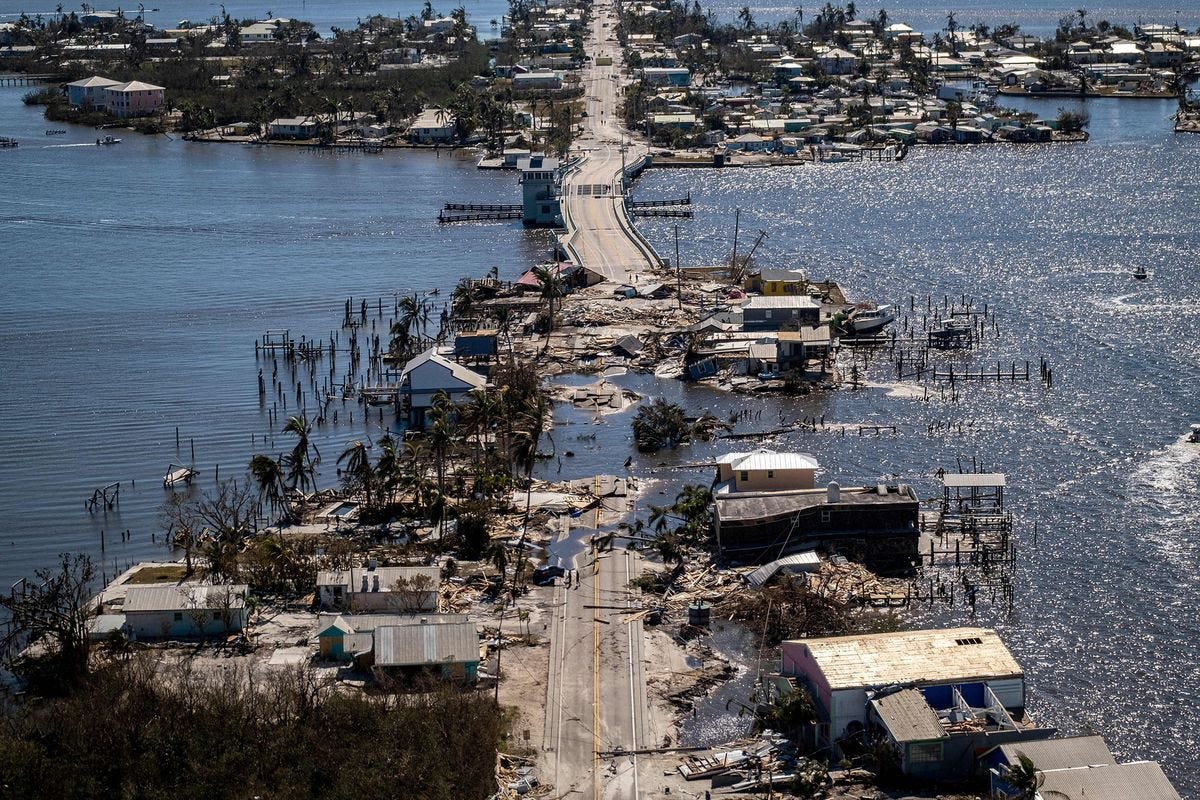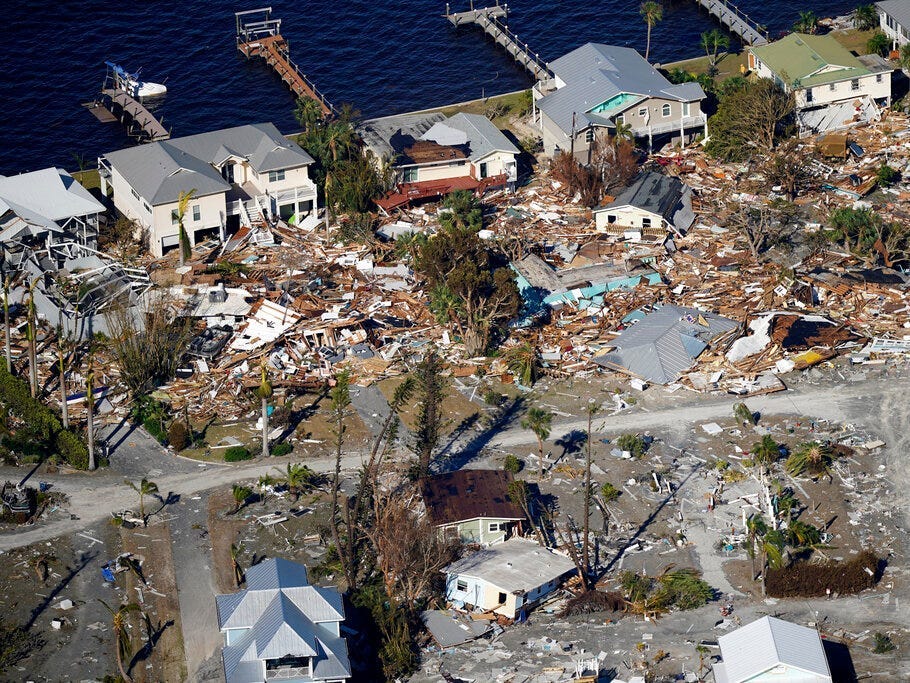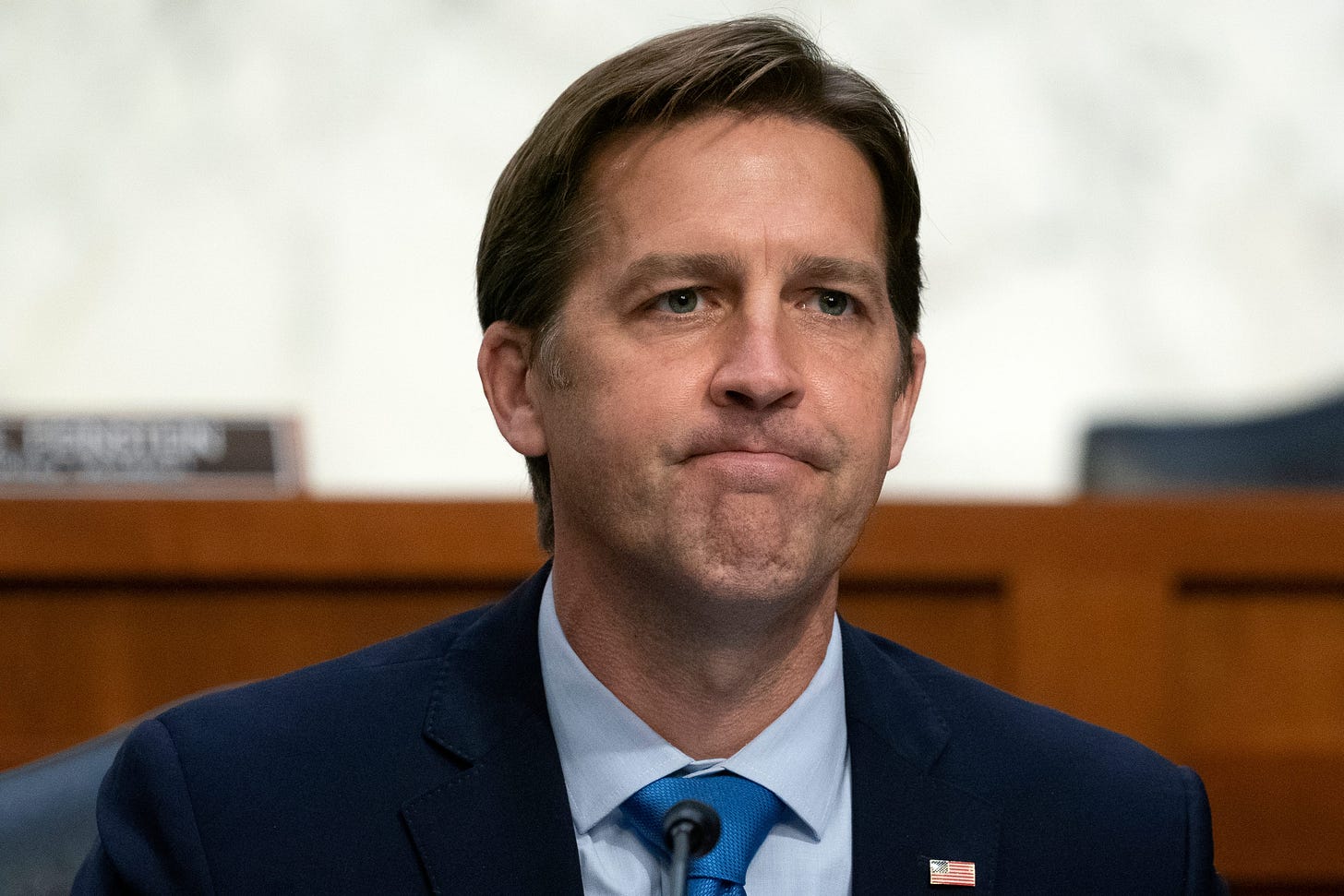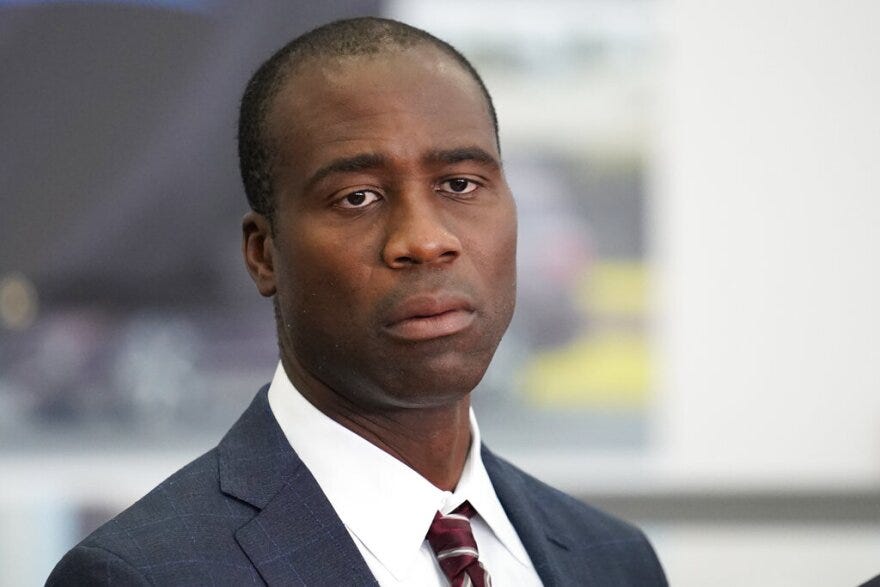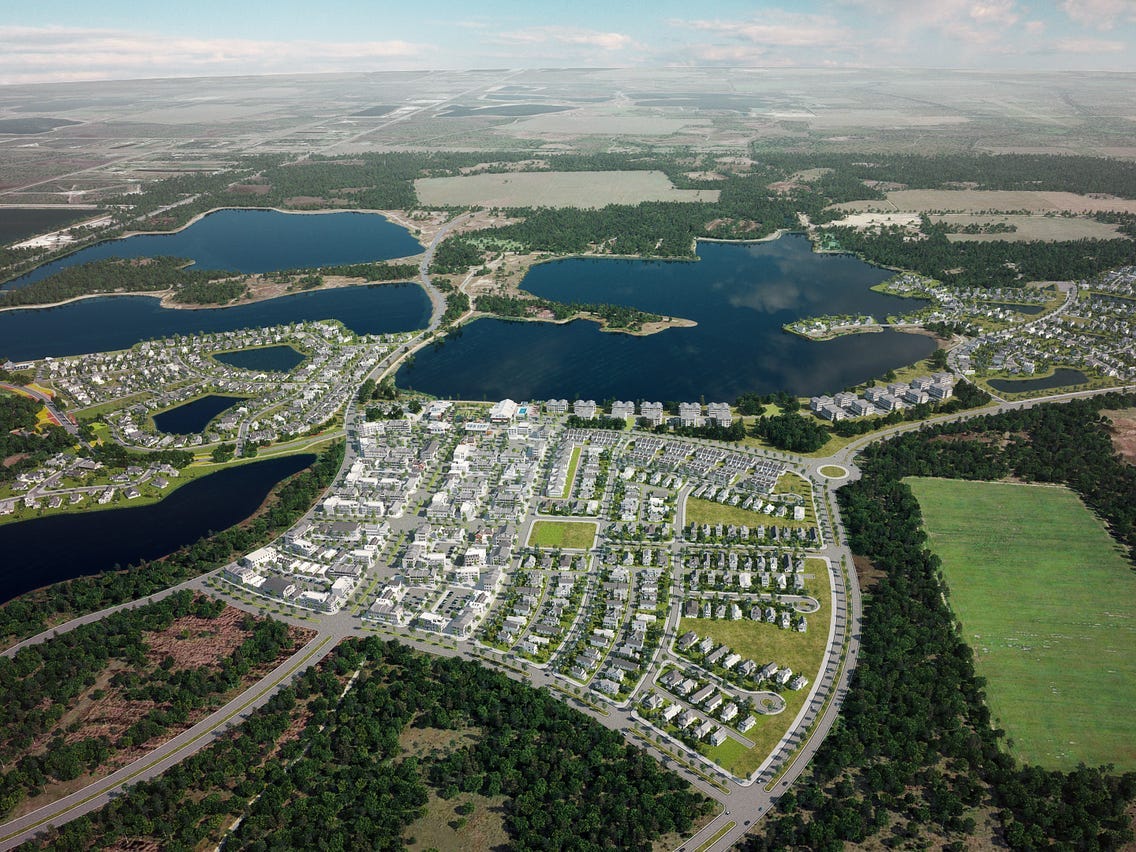The cost of Hurricane Ian, the recovery continues as death toll mounts, Sen. Ben Sasse to lead UF as president, and more...
October 13, 2022 — This Week's Top Stories in Florida
Welcome to this week’s edition of Floridian Today, a newsletter about all things Florida — from politics, business, real estate, and climate. Reporting from the Sunshine State, these are the most important stories you need to know. To never miss an update, subscribe here:
Here’s what is happening in Florida…
Hurricane Ian may have been the costliest storm to ever hit Florida
As the damage from Hurricane Ian continues to be surveyed, one fact is certain: it was one of the most destructive storms to hit Florida and among the worst to hit the nation in the 21st century. Preliminary estimates of the destruction range from $55 billion to as much as $75 billion in insured losses in Florida, Georgia, the Carolinas, and Virginia. Analytics company RMS pegs the estimated storm-related costs at $67 billion. The vast sum of these wind and storm surge losses stemming from Hurricane Ian come from the southwest coast of Florida that wiped out homes and businesses. Unsurprisingly, water-related damage, including inland flooding in central Florida, from the storm will be responsible for the greatest costs as wind damage was reduced thanks to strict building code standards. Additionally, RMS estimates that the federal National Flood Insurance Program (NFIP) could see around $10 billion in losses from storm surge and inland flooding brought by the hurricane. Hurricane Ida in 2021 was the costliest hurricane recorded in Florida at $36 billion in insured losses, according to the Insurance Information Institute. For comparison, Hurricane Katrina in 2005 which brought widespread flooding to New Orleans topped the list of most expensive hurricanes with $85 billion in losses, adjusted for inflation. While final loss totals will evolve for several months, Hurricane Ian is expected to be among the costliest natural disasters in U.S. history and take a significant financial toll on the insurance industry.
The recovery and shock continues after Hurricane Ian
Ground zero for Hurricane Ian’s devastation is Lee County, encompassing the hard-hit areas of Fort Myers, Cape Coral, Fort Myers Beach, and Sanibel Island, where the storm made landfall with wind speeds just under a Category 5 and wreaked havoc along the coastline. Since 2010, the area has been one of the hottest markets to move in the country, growing 27% in a 12-year period and earning the title of the second-fastest-growing county in Florida and No. 9 in the nation. This is despite being situated along Florida’s Gulf Coast, vulnerable to storm surge, and taking the brunt of Hurricane Irma in 2017. Residents and first responders continue to assess the storm’s toll on their community and have been faced with a harsh reality of destruction that will take years to recover. Many of the barrier islands off the southwest coast in Lee and Charlotte counties have only been accessible by boat. Once towering trees lay on their side, vegetation has turned brown from the excess of water, and debris from former homes and businesses is strewn across the landscape. Locals understand hard work will be required to salvage what Hurricane Ian left behind and rebuild the community to its former status. Tens of thousands of residents remain without electricity as crews repair downed power lines and the wait will continue for those on Pine Island and Sanibel Island until access can be made. Almost no building or piece of property was left unscathed from Ian’s wrath. Many homes that survived previous storms on the west coast of Florida such as Category 4 Hurricane Charley in 2004 were no match for the wind speeds that reached 150 miles per hour and storm surge that peaked at 12 feet. The landscape has become unrecognizable by those who call it home, but the ongoing recovery efforts are providing slow, steady relief, and rebuilding the community will come with time and the labor of many.
Hurricane death toll climbs past 100
Hurricane Ian was responsible for at least 119 deaths in Florida with most of the victims dying from drowning, records show. The vast majority of the dead were located in two counties on Florida’s southwest coast – Charlotte and Lee, facing unprecedented storm surge and winds in excess of 150 miles an hour. The storm was attributed to deaths in 17 counties throughout the state, including county’s on the east and west coasts as well as in central Florida. Among the dead, most were older, with more than 60% of victims at least 60 years old, according to information that has been released so far. Another roughly 25% of the dead were in their 80s and 90s. It was the third-deadliest storm to hit the U.S. since 2000, only behind Hurricane Katrina, which left about 1,400 people dead, and Hurricane Sandy, which was blamed for 233 deaths. Meanwhile, it was one of the strongest hurricanes to strike Florida behind Hurricane Michael in 2018, Andrew in 1992, and the Great Labor Day Hurricane of 1935. However, officials in Lee County, accounting for the largest number of fatalities, are facing criticism for delaying mandatory evacuation orders for more than 24 hours, despite warnings from the National Hurricane Center of severe, life-threatening storm surge. Lee County manager Roger Desjarlais defended his team’s decision for the delay by citing the uncertainty of the storm’s path and Ian’s last-minute shift further south and to the east. Unfortunately, the National Hurricane Center’s updated trajectory of the hurricane came less than 24 hours before the storm made landfall near Cayo Costa in southwest Florida. Gov. DeSantis defended official’s response by saying that they “responded very quickly to the data” when computer models put Lee County into Hurricane Ian’s path. The post-storm analysis will be conducted by the National Hurricane Center to evaluate its forecasting and messaging to public officials, including an analysis of the high death toll.
Beware of post-Hurricane fraud, consumer advocates warn
Residents who were in the path of Hurricane Ian’s destruction are now being warned of fraudulent contractors and scammers by the Florida Department of Financial Services. “Consumers who have already been impacted by Hurricane Ian should not also have to deal with deceptive, unscrupulous tactics perpetrated by scammers,” Insurance Consumer Advocate Tasha Carter said. “I encourage consumers to first contact their insurance company before contracting with any third party, a party that may not have their best interest in mind.” The National Insurance Crime Bureau (NICB) also advised homeowners to carefully “vet legitimate contractors, get at least three bids, and never pay a contractor in full before the work is complete.” The NICB is a collective of insurance companies and vehicle rental agencies that work with law enforcement to fight insurance fraud, and they estimate that 5-10% of claims following a natural disaster involve fraud. This could result in $6 billion in illegitimate claims after Hurricane Ian. The NICB reminds southwest Florida residents to protect themselves from deceptive contractors after a storm by obtaining costs and estimates for work in writing, verifying that a contractor has a state license, and contacting your insurance company before repairs are completed.
Nebraska U.S. Senator Ben Sasse set to become next UF president
Republican U.S. Senator Ben Sasse of Nebraska is all but certain to become the next president of the University of Florida, succeeding outgoing President Kent Fuchs who announced his retirement in January 2022. Sen. Ben Sasse emerged as the sole finalist for the job by a search committee convened to identify and vet candidates to lead Florida’s flagship university and research powerhouse. "Ben brings intellectual curiosity, a belief in the power and potential of American universities, and an unmatched track record of leadership spanning higher education, government and the private sector," Committee Chair Rahul Patel said. Prior to serving as a senator, Sasse was the president of Midland University, a private Lutheran school in Nebraska; however, with an enrollment of 1,600 students, the university is markedly smaller than the behemoth that the University of Florida is. He also holds two master's degrees and a Ph.D. from Yale University. Sasse is two years into his second term as Nebraska’s junior U.S. Senator and is expected to resign at the end of the year, allowing Republican Nebraska Governor Pete Ricketts to appoint a successor to carry out the remainder of Sasse’s term. The university said their search included 700 potential candidates and narrowed it down to a dozen before unanimously recommending Sasse. The recommendation is subject to UF’s Board of Trustees’ approval, as well as confirmation by the Florida Board of Governors. The board of trustees meets on November 1.
Senator Ben Sasse made his first in-person visit to UF this week after being named the school’s lone finalist and was met with a flurry of student protests and sharp questions. As a Republican serving in the Senate, he drew criticism from the largely left-leaning student body for his positions and voting record on same-sex marriage, LGBTQ rights, abortion, and faced accusations of racism. The school’s presidential candidate made the visit to meet with administrators, staff, and host three scheduled open forums with students. However, as hundreds of protestors descended on the ballroom where one of the forums was being held, Sasse left 15 minutes early. Students also took issue with the search committee’s efforts that settled with the Nebraska senator out of 700 possible candidates and called for the release of the final dozen names considered by the committee. The university has not released that list despite pressure from students and has not commented on the situation.
Florida’s surgeon general faces backlash after COVID-19 vaccine guidance
Medical experts are pushing back against Florida Surgeon General Joseph Ladapo after advising men against taking the Pfizer-BioNTech and Moderna COVID-19 mRNA vaccines after claiming they increase the risks of suffering a cardiac-related death. Dr. Ladapo, who was appointed as the state’s medical chief by Gov. DeSantis in 2021, cited an analysis based on a Florida Department of Health (FDOH) study that purported to show 84 percent of vaccinated men aged 18 to 39 years old had an increased risk of cardiac-related death within 28 days of getting the shot. The medical community was quick to denounce the claims, arguing that vaccines are safe and effective, and Ladapo’s recommendations conflict with CDC guidance and those of other agencies/medical associations, including the FDA, World Health Organization, and the Mayo Clinic. Medical experts called the study in which the data was collected as “flawed” since it was not peer-reviewed or published in a scientific journal, and the new guidance ignores the vaccine’s ongoing safety record. As the study analyzed the death certificates of patients who died within a 25-week period after getting vaccinated, doctors pointed out that the number of deaths – 20 in total – within the examined time frame was very small and an added death could easily skew results. With these valid questions about the veracity and plausibility of COVID-19 vaccine risks, the published white paper by FDOH acknowledges the “limitations” of the study. It states, “This study cannot determine the causative nature of a participant’s death. We used death certificate data and not medical records…Cardiac-related deaths were ascertained if an ACME code of I3-I52 were on their death certificate, thus, the underlying cause of death may not be cardiac-related.” In response to Florida’s new COVID-19 vaccine guidance, the FDA said the recommendation “is flawed and a far cry from the science: COVID-19 vaccines have been proven safe and effective, and severe adverse reactions are rare. The benefits of COVID-19 vaccination — preventing death and hospitalization — are well-established and continue to outweigh any potential risks."
Florida’s insurance market after Hurricane Ian
The state’s complex home insurance market has been in crisis for years and is pushed closer to the brink of collapse with every passing year. Hurricane Ian and the devastation it inflicted delivered even more trouble to the insurance industry in Florida. Homeowners have seen their insurance rates nearly double in five years, but despite this, insurers are losing money and going bankrupt or even fleeing the state altogether. Compared to the national average, insurance rates in the Sunshine State are nearly triple and the estimated $67 billion of insured losses from Hurricane Ian will likely cause even greater financial ruin to the market.
One reason for the turmoil with insurance providers in Florida is the increased risk of hurricanes. The state experienced costly destruction from Hurricane Matthew in 2016, Irma in 2017, and Michael in 2018. Ian is just the latest to join the list. However, since a great sum of building damage is caused by inland flooding and storm surge, the National Flood Insurance Program covers these losses – not private property insurance. Adding to the problems is that reinsurance costs are on the rise. That is, insurance for insurance companies to assist during times of increased claims such as after a widespread hurricane. But fraud involving unscrupulous contractors with the assignment of benefits following a storm is the greatest single reason for an insurance market in crisis with soaring costs.
According to the Florida Department of Financial Services, assignment of benefits, or AOB, is “an agreement that transfers the insurance claims rights or benefits of the policy to a third party. An AOB gives the third party authority to file a claim, make repair decisions, and collect insurance payments without the involvement of the homeowner.” Assignment of benefits often results in dishonest contractors suing insurance providers when the contractor’s damage assessment conflicts with the insurance companies’ own determination or if they find the damage is not covered. Additionally, many lawsuits plaguing insurers stem from homeowners who do not have flood insurance through the federal National Flood Insurance Program. Despite only about 14% of Floridians having flood insurance, some file damage claims with their private property insurance company, arguing that sustained damage was caused by wind and thus, covered by their own insurer. The cost of litigation or settling the lawsuit is expensive and the environment in Florida is ripe for these lawsuits. About 79% of all property claims against insurance companies in the United States are filed in the Sunshine State, totaling costs of over $3 billion for insurance companies challenging these lawsuits. These expenses eventually get passed on to homeowners, but insurers are still losing money even when raising premiums. With Hurricane Ian expected to be one of the costliest storms ever in Florida history, many insurance companies are expected to leave the state, putting pressure on the state’s government-owned insurer of last resort, Citizens Property Insurance. What this could mean for homeowners in Florida is that they could see their insurance costs rise significantly, continuing to add to the long-term woes.
DeSantis-Crist gubernatorial debate rescheduled
The only televised gubernatorial debate between Republican incumbent Governor Ron DeSantis and Democratic nominee Charlie Crist has been rescheduled for Monday, October 24, following the aftermath and response to Hurricane Ian. The debate will air at 7 PM on WPEC-TV CBS in West Palm Beach from the Sunrise Theater in Fort Pierce. The broadcast will air live across the state. The debate was moved from its original date on October 12 after Hurricane Ian’s destructive impact on southwest Florida has preoccupied much of Gov. DeSantis’ time as he manages the government’s response to the crisis. Similarly, former U.S. Representative Charlie Crist has been traveling the region to deliver food and donate supplies as part of his “Together Florida Tour,” including several stops this week in the area. The event will be the only opportunity voters will get to see the two candidates for governor appear side-by-side on the same stage despite Crist’s push for additional debates. However, DeSantis has not agreed to any other debates beyond the one scheduled on October 24. The TV debate will air on the first day that early voting begins in Florida ahead of the November 8 election.
Gov. DeSantis maintains comfortable lead one month from Election Day
The Real Clear Politics polling average shows Gov. Ron DeSantis with a comfortable 7-point lead against Democratic challenger Charlie Crist in the remaining weeks of campaigning. DeSantis’ strong lead was buoyed by a Mason-Dixon poll conducted late last month that gave the incumbent governor an 11-point advantage over Crist. According to that poll, just 6% of likely voters remain undecided. The Republican maintains the lead throughout the state, except for the Democratic stronghold areas of southeast Florida, with 60% of men and 92% of Republicans supporting his candidacy. Among unaffiliated voters, DeSantis was favored by 52% compared to Crist’s 39%. Similarly, the Florida governor boasted a 55% job approval rating in September 2022.
Florida’s hurricane resilient community: Babcock Ranch
With Fort Myers and neighboring Cape Coral ranked among the hottest housing markets in the nation, a nearby 27-square-mile planned community located in southeastern Charlotte County and northeastern Lee County is grabbing attention following the destruction of Hurricane Ian. Less than 30 miles from the scenes of devastation in Sanibel Island and Fort Myers Beach, the town of Babcock Ranch was left relatively unscathed despite the magnitude and force of the storm that wreaked havoc on the surrounding area. So how did Babcock Ranch stand up so well to Hurricane Ian? In 2005, the town was created via a public-private partnership with the state and local governments with the aim of becoming a sustainable community and the first solar-powered city in the United States. Designed around resiliency, Babcock Ranch was built with the future in mind and to weather intensifying storms and sea level rise as a result of climate change. When Hurricane Ian passed over the town two weeks ago, it suffered very little damage and the more than 2,000 homes never lost electricity. Nearly 700,000 solar panels power the town to provide clean, zero-emission energy that is capable of powering nearly 30,000 homes. Not a single photovoltaic panel was dislodged by the force of the category 4 storm, but the hardened power grid and infrastructure allowed Babcock Ranch to keep the lights on. The master-planned town sits 30 feet above sea level and features a well-designed fortified water management system and utility that prevents flooding and diverts stormwater to the streets. Florida native plants act as a natural drainage system for heavy rainfall, power lines, and internet cables are buried to eliminate disruption from wind damage, and all structures are built to the state’s latest building codes. Babcock Ranch was built to withstand natural disasters and its latest test serves as proof that an eco-conscious, resilient community can brave the worst of mother nature.
Will people return to areas devastated by Hurricane Ian?
Cities and towns along the state’s southwest Gulf Coast were left in ruin by the powerful winds and catastrophic storm surge of Hurricane Ian, leaving behind scenes of crumbling buildings, scattered debris, and raw emotion. Residents and business owners are now faced with a big decision: do they stay and rebuild or leave the place they have called home? It’s the question locals are having to contemplate with intensifying storms and rising sea levels amid climate change. When your home washes away and there is nothing left to salvage, do you rebuild and take a chance of falling victim to devastation again? Seemingly, the risks have never been greater for residents in the Cape Coral-Fort Myers metropolitan area, so leaving to rebuild your life elsewhere would be understandable following a destructive storm. However, research indicates that the lure of the warm beaches and sunny weather is too great and Americans tend to return to coastal areas following natural disasters, even when factoring in the dangers posed by climate change. Apparently, a sentiment exists that the allure of paradise is more compelling than any actual risk or cost. But assuredly, some Floridians will depart for calmer locales, and compounding the issue is the state’s hostile insurance market. Most homeowners in Lee and Charlotte counties, including those that suffered significant losses, lack flood insurance, and rising property insurance premiums statewide will only add to the costs. What will become one of Florida’s hottest markets is uncertain, but some experts speculate Fort Myers and the surrounding area will take on a new identity in the following years of recovery.
Exploding EVs following hurricane-related flood waters
After Hurricane Ian brought a deluge of rainfall and flooding to parts of Florida, state officials are warning of electric vehicle fires, citing fire departments that have responded to burning EVs in the last two weeks. EV batteries waterlogged from storm-related waters are likely to suffer corrosion which could result in vehicle fires, per Florida’s chief financial officer and fire marshal Jimmy Patronis. "There’s a ton of EVs disabled from Ian. As those batteries corrode, fires start," Patronis said in a recent tweet. "That’s a new challenge that our firefighters haven’t faced before. At least on this kind of scale." Accompanying his social media post of the warning was a video from Naples that shows firefighters extinguishing a fire caused by a Tesla EV’s battery. There have been numerous reports of fire department crews taking hours and hundreds of gallons of water to put out EV battery fires after being submerged in flood waters following Ian. U.S. Senator Rick Scott’s office has sent a letter to electric vehicle manufacturers and Department of Transportation Secretary Pete Buttigieg to request information and urge action on EV’s lithium-ion batteries. In his letter, Sen. Scott said this issue “has forced local fire departments to divert resources away from hurricane recovery to control and contain these dangerous fires.”
Thanks for reading this edition of Floridian Today. To never miss an update, subscribe for free:
In the meantime, if you learned something or found this read interesting, please consider sharing it to grow our community!



